For some employees, the idea of a "uniform" means loss of self-expression – but for many more, donning the work uniform is a source of pride and also a budget-saver, as the employee doesn't have to shop exhaustively for "work clothes."
A uniform program not only evens out the playing field, it conveys to the customer or patron more immediately the identification of the employee as a staff member and further, what level of staff he or she may be –executive, management, floor sales.
 In any case, uniformity is mostly perceived as "unity" by staff and customers alike. Imagine going to a restaurant, where servers, busboys, bartenders and barbacks are allowed to wear street dress. It would feel chaotic.
In any case, uniformity is mostly perceived as "unity" by staff and customers alike. Imagine going to a restaurant, where servers, busboys, bartenders and barbacks are allowed to wear street dress. It would feel chaotic.
Trade show and other sales event opportunities where employees staff a booth for their consuming audience is another environment in which that uniformity conveys unity.
The wide range of uniform garments today are fashionably savvy, well constructed and quite versatile. And this market segment has evolved somewhat dramatically in only five years as more businesses great and small decide that a uniform program is a valuable tool in branding.
Craig Smith of Rugged Outfitters opines that "the marketplace for uniforms is exploding. Years ago, workers were allowed to show up in their privately purchased work apparel, not conforming to corporate standards for look/color/style. It seems that businesses, especially in the medical industry, want everyone to look the same, same colors, styles and with corporate branding."
When it comes to chef uniforms, Scott Thaxton of Aprons, Etc. reports increased requests from customers that are seeking a wider variety of options. Short-sleeved, moisture wicking, more fashion-forward designs and a larger color palette all have all been added to the supplier's line to satisfy even the most specific and discerning chef for him/herself and his/her kitchen staff. "After all, the chef coat is what they wear for both comfort and image," he says." Aprons have become a standard again in food service for servers because they are unisex in size, and provide an excellent opportunity for branding through imprinting and color choice.
 In the more corporate sector, Taraynn Lloyd of Edwards Garment observes that uniforms today are much more fashion forward than bland or uncompromising. It is no longer out of the ordinary to walk into a business establishment and wonder if the employee's uniform was actually purchased at retail. "Currently, the term 'uniforms', although universally recognized, has shifted to 'image apparel,'" she remarks. "All businesses – whether they are corporate or service – want to extend their brand and how they project that brand with their employees is through apparel. Probably the highest compliment you can hear is when someone says 'I’d totally wear that outfit.' You see, they aren’t looking at is a uniform, but rather something that they could picture themselves wearing."
In the more corporate sector, Taraynn Lloyd of Edwards Garment observes that uniforms today are much more fashion forward than bland or uncompromising. It is no longer out of the ordinary to walk into a business establishment and wonder if the employee's uniform was actually purchased at retail. "Currently, the term 'uniforms', although universally recognized, has shifted to 'image apparel,'" she remarks. "All businesses – whether they are corporate or service – want to extend their brand and how they project that brand with their employees is through apparel. Probably the highest compliment you can hear is when someone says 'I’d totally wear that outfit.' You see, they aren’t looking at is a uniform, but rather something that they could picture themselves wearing."
As may be expected, many more uniform garments are now featuring both eco-friendly and performance attributes – because many more clients expect it should they want it. For example, a vegetarian or organic restaurant will certainly select eco-friendly garments to show their commitment to the natural and sustainable movement. In addition, golf and tennis clubs will most assuredly want moisture-wicking polos. Upscale day spas and salons would likely want both attributes.
Aprons, Etc., says Thackston, supplies chef apparel and aprons in a variety of eco-friendly fabrics. "Many customers, such as garden centers, whose line of products are earth-safe, are continuing their philosophies by purchasing aprons that reduce their environmental footprint. Meanwhile, performance fabrics offer both comfort and wrinkle-resistance."
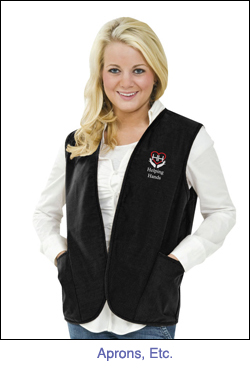 According to Lloyd, performance fabrics have been in high demand in this garment sector for many years. "Fabric features that include UV protected (UPF 50 factor), soil release, Teflon or Scotchgard protection, moisture wicking, iron free, color fast, and tuff-pil plus are now a part of discussions about a uniform program," she says. Educate yourself about each attribute and discuss how that attribute will enhance employee comfort and work productivity - always the bottom line.
According to Lloyd, performance fabrics have been in high demand in this garment sector for many years. "Fabric features that include UV protected (UPF 50 factor), soil release, Teflon or Scotchgard protection, moisture wicking, iron free, color fast, and tuff-pil plus are now a part of discussions about a uniform program," she says. Educate yourself about each attribute and discuss how that attribute will enhance employee comfort and work productivity - always the bottom line.
In workwear, Smith reports, many current brands have introduced improved fabrics over the last few years. In traditional workwear, he is seeing many wicking/moisture management fabrics. "We are also seeing many fabrics with water-repellent finishes. Carhartt has introduced this on all of their heavyweight sweatshirts. Odor guard is also available. In the medical industry, 2015 will see the introduction of many anti-microbial garments for protection. Cherokee, a leader in scrubs, just released Certainty and Code Happy lines of medical scrubs with this attractive feature."
Perhaps one of the most significant challenges in stewarding a branded uniform program is ensuring all sizing needs are met, including building in "extras" in case an employee accidentally ruins a garment, or dramatically changes size. Smith shares, "This is not an easy process, but must be done. Sometimes we will send out 'try on' sizes."
Lloyd asserts that consistent sizing is critical for any uniform program, and suppliers such as Edwards knows that people really do come in all sizes. Edwards' men’s styles span sizes S to 6XL for tops and 28 to 54 in bottoms, while ladies' tops are sized from XXS to 3XL and bottoms from 0 to 28. Additionally, many of its styles are offered in talls.
In the food world, says Thackston, the majority of garments for chefs are unisex sized. The sizing is a generous working size for men, and for women you simply drop one size down -- a woman who wears a medium would buy the unisex coat in a small. "If the account is large where the rep is going to do an onsite measure before the order is placed, they can order a set of sizing samples which would be one of each size," he says. This set would be available at a reduced price. Although it is not returnable, it can be used by your rep for future measuring or placed in a location from which new employee orders will be placed."
Just look around your community and visit a wide variety of businesses to see how the staff are dressed. You will be surprised at how many uniforms are out there. Don't be afraid to introduce yourself to management and ask if he or she is satisfied with the current uniforms in place. Quite a few businesses have not had a uniform revamp in quite a while, and doing so will help keep that business current and fresh in the eyes of their customers.
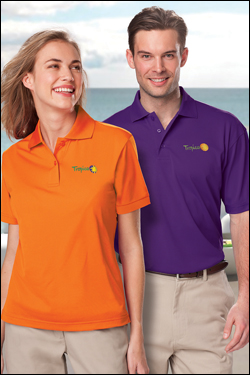 |
| Blue Generation |
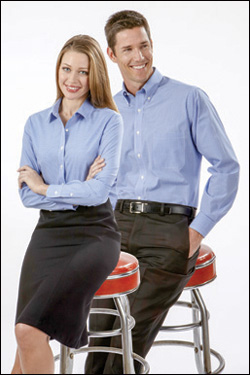 |
| Carolina Made |
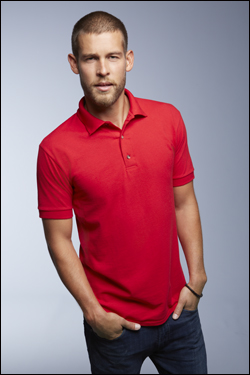 |
| Anvil |
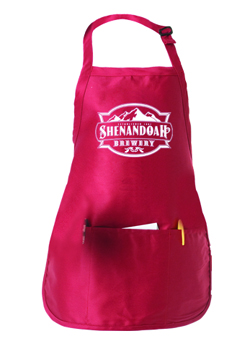 |
| Southern Plus |
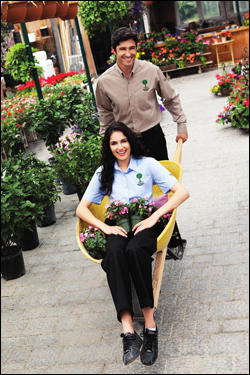
|
| Trimark |